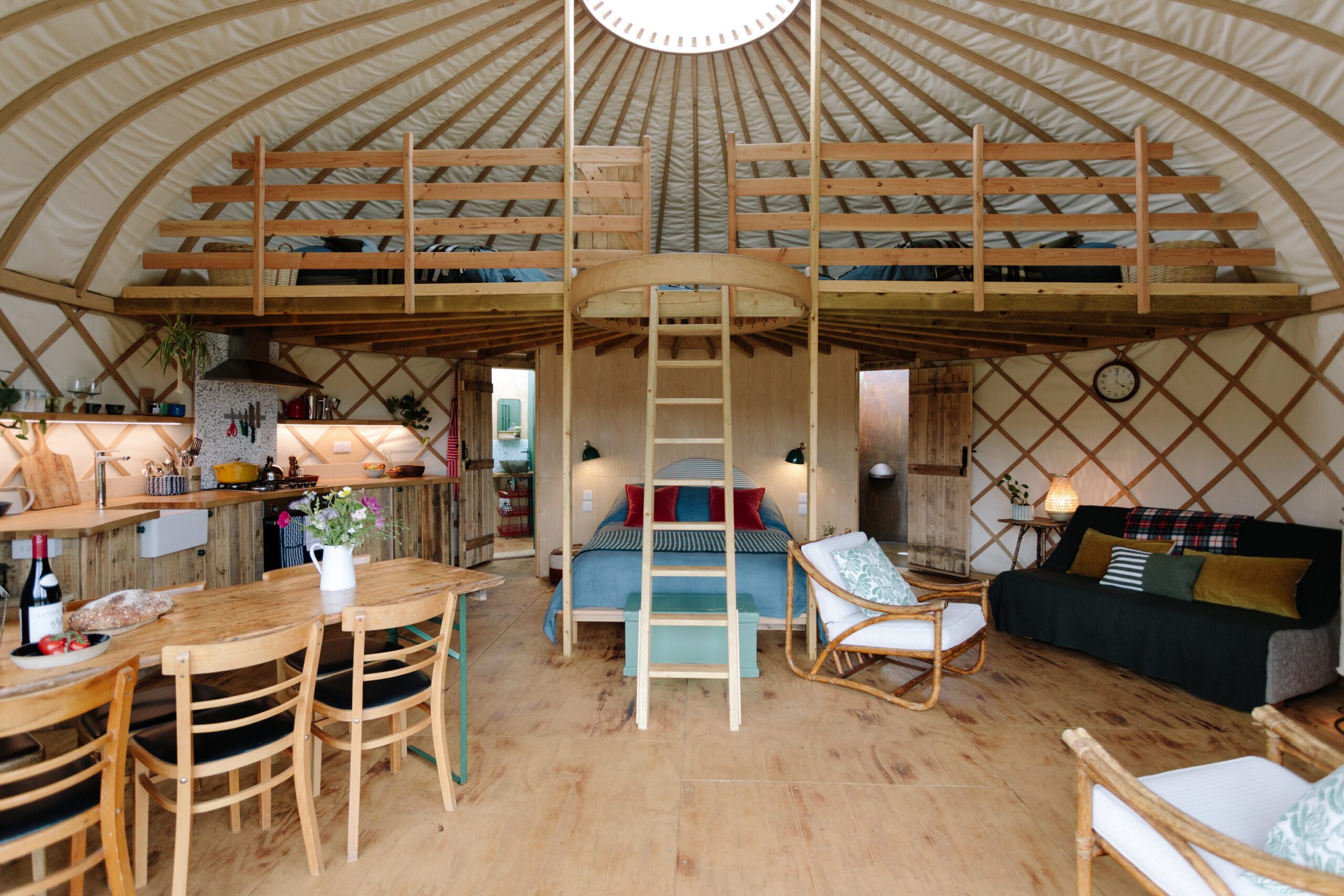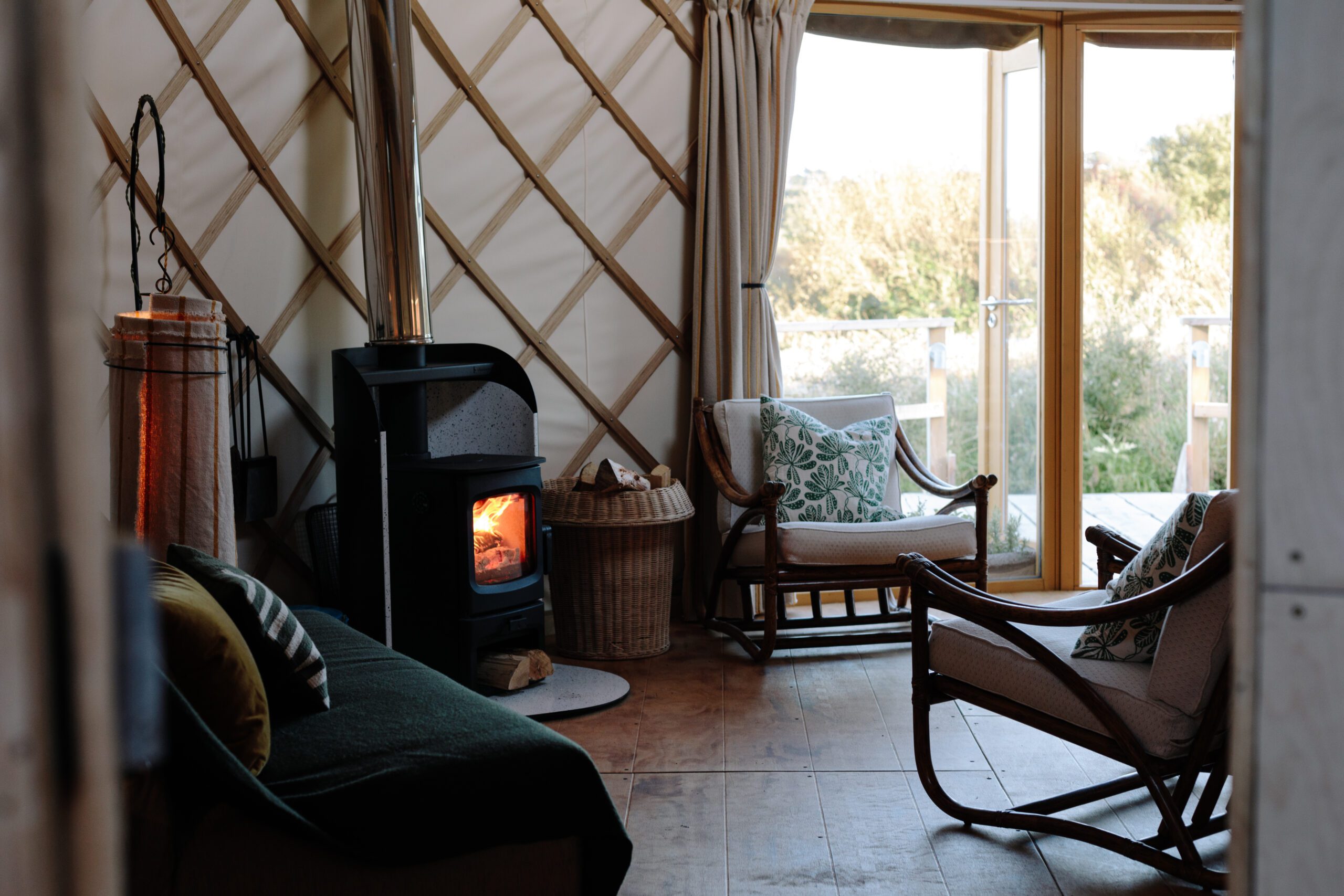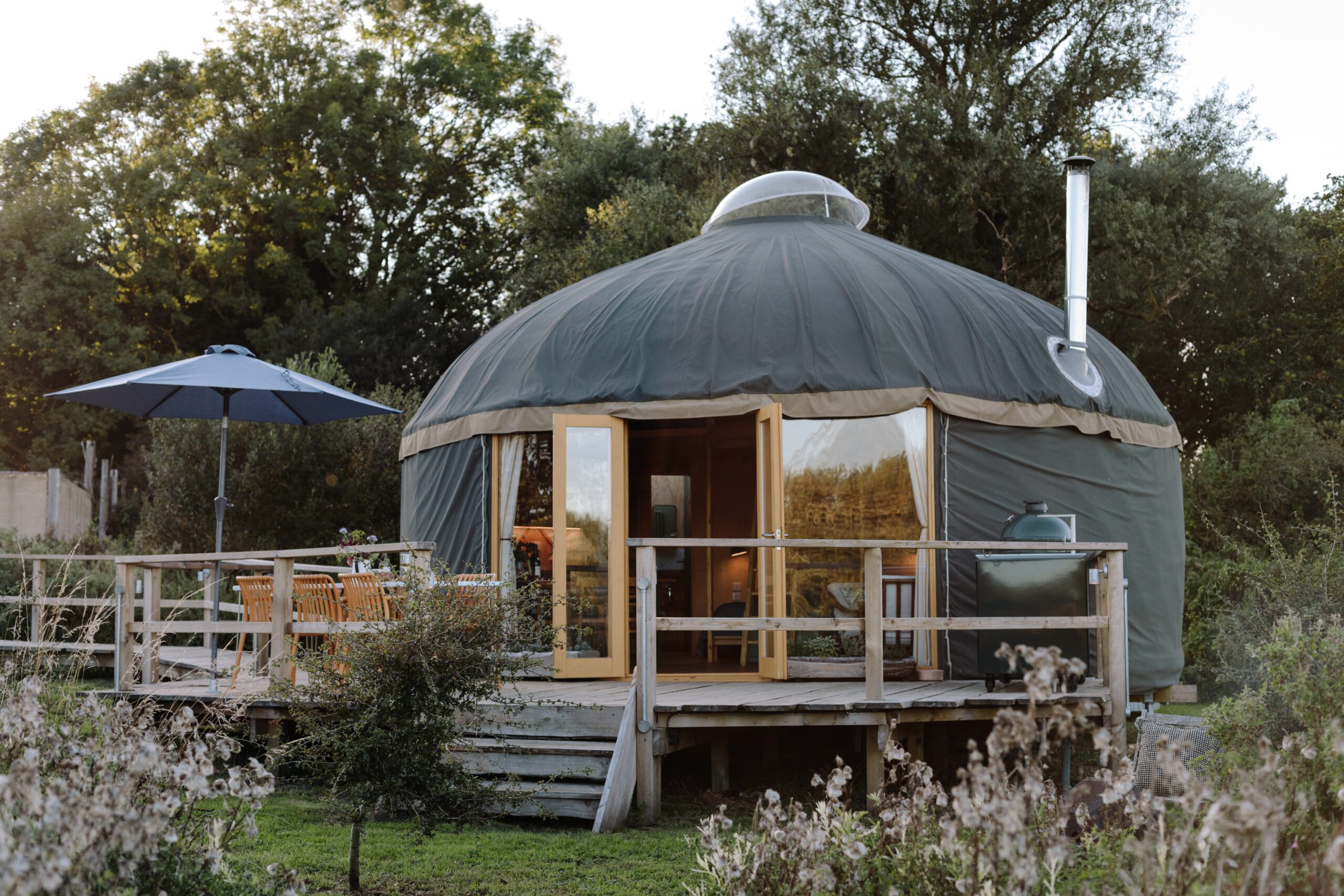The next in a series of essays by Dammy Ponnuthurai is about the joy of ‘Tiny Home Living’. Dammy is the author of Midnight Feasts: An Anthology of Midnight Feasts & Late Night Munchies, and co founder of Dammy (a workwear jacket brand riffing on the chefs jacket). She is also former founder of Crane cookware used by the Charnwood team in many of our photo and video shoots.
Read to the end to find out how you can experience the joy of Tiny Home Living for yourself!
________________
It is He who sits upon the circle of the earth, and the inhabitants are as grasshoppers, who stretches out the heavens as a curtain, and spreads them out as a tent to dwell in.
Isaiah 40:22
Anyone who has experienced camping, will be able to gauge a sense of what living in a yurt feels like. Camping in the UK is strictly governed by the weather, with the most dedicated campers battling against lashing rain, high winds and dampness. Whilst struggles with bad weather may not feel pleasant, they force us to exist entirely in the moment and sense nature – in touch, sight and sound. Even within a stormy landscape we now begin to see a seemingly infinite glimmer of light, one that we would likely not notice within the daily grind of our routine.
The first yurt dwellings, known by the Mongolians who used them as ‘Ger’, can be traced back thousands of years to Central Asia. Today over half of the Mongolian population live in Gers, meaning a life led in a far more shared and communal way than other city dwellers. In 2013, the Ger became part of Unesco’s intangible cultural heritage for Mongolian customs, reflecting the fact the innate cultural richness is both physically and inherently sewn into their homes.
The circular structure of the Ger means that it can be efficiently heated, whilst the crown of the yurt allows fresh air to circulate. The structure’s conception is directed by some of the Mongolian cultural and spiritual beliefs in terms of the sense of, ‘ the eternal blue sky’ and the principle of impermanence and embracing of the moment. The outer structure of the tent reflects the wheel of the Dharma and the principles of teaching known as the ‘Eightfold Noble Path’, (Understanding, Thought, Speech, Action, Livelihood, Effort, Mindfulness and Concentration), whilst the infinity knots are about the universal interconnection between all things.

The opportunity to experience nature outside the cosseted walls of our homes is opened to us by time spent within a yurt. The interior of a yurt, with its circular nature, also creates an openness to how we interact outside of the compartmentalised ways of regular everyday life. Camping is almost an opportunity to renew a connection to our childhoods. Where we hopefully can recount innocent childhood pleasures such as finding that favourite stick, gathering petals, examining shells for the sound of the sea, writing and drawing freely on a myriad of surfaces, first attempting to pretend to read and the endless questions of why. Finding pleasure in puddles, collecting leaves, and enjoying the dirt of the outside world are all small infinite pleasures from childhood grounded in nature.
Young children look at the world with such untainted freshness. For them, there are no thoughts of expectation or judgment. The closest we get to such unabated joy in adulthood is the experience of mandatory snow days that come up from time to time, when nature holds society in deep silence, like a soft canopy. With an enforced slow pace on us, we again are captivated by the slowness that such a moment in nature gives us.
As we made our journeys to school, we began our passage to goal setting, judgement, and expectation. We are influenced not only by our family’s expectations but those set by school and classmates. As the pre-teen age begins this is added to with the intensity of expectations set by a myriad of social channels. Sitting on a bus or train you can probably count on one hand the number of us that travel without the aid of some device that isn’t taking up our attention. This conveyor belt of existence has placed us perhaps in a gilded cage of our own making where the natural world around us, is relatively unnoticed. If a robin appears at your window and pauses, you are likely to miss the resonant joy of seeing it flitter and the opportunity to be brought back to childhood wonder.
Children are the ultimate minimalists; we have all heard a story where the cardboard box proves more of a play item than its contents. Minimalism and interconnectedness are two principles that go hand in hand, offering something close to an answer to the overwhelming pursuit of materialism. Minimalism considers not only the quality of an object, but the joy it brings, and subsequently reducing ownership of items that don’t meet this condition. Circular living takes this further, with the inherent goal to prevent waste and ensure that how we live is aligned with the limits of natural resource use. We look to value not necessarily productivity, but how we may share, reuse and think of regeneration and others in the way we consume. We see in circular thinking an unlimited connection to nature and a way of living that reaches out to those around us.

The Danish word ‘hygge’, shows us how we may think of the whole as a concept, at the simplest level. Hygge means cosiness: feeling warm, comfortable, and safe. The Danes depict this sense as being achieved through such simple acts of lighting a candle, baking and spending time with people you love.
As we head to the end of the year to Christmas and the darkness of winter, light becomes increasingly important. We see it within the reassurance of a roaring fire, the lit candle, the warming oven, but most especially in the light we find in each other. That light can be found just through simple acts in thinking of others and sharing what we can give to make life brighter for all whom we encounter. We can draw that ‘Ger’ living into the walls of our own home, as we take those moments just to sit still and watch the simple magnificence outside our window.
Explore our wood-burning stove tips during the winter season.
Why Choose Us?
At Charnwood Stoves, we blend innovative design with exceptional functionality, perfect for enhancing any living space, including tiny homes. Our wood-burning stoves are crafted with sustainability in mind, offering efficient heating solutions that minimise environmental impact. Our team prioritise quality and durability, ensuring each stove provides reliable warmth and charm for years to come. With a commitment to customer satisfaction, our expert team is here to guide you in finding the ideal stove to meet your unique needs. Choose Charnwood for elegance, efficiency, and eco-friendly living.
“The most important light is the one you cannot see” Anthony Doeer
________________
If you haven’t read Dammy Ponnuthurai’s piece on ‘storytelling’ click here – we highly recommend it!
If you want to experience Yurt Living for yourself, in one of the most beautiful locations on the Isle of Wight, then check out our range of wonderful self-catering holiday accommodation at Moor Farm.

